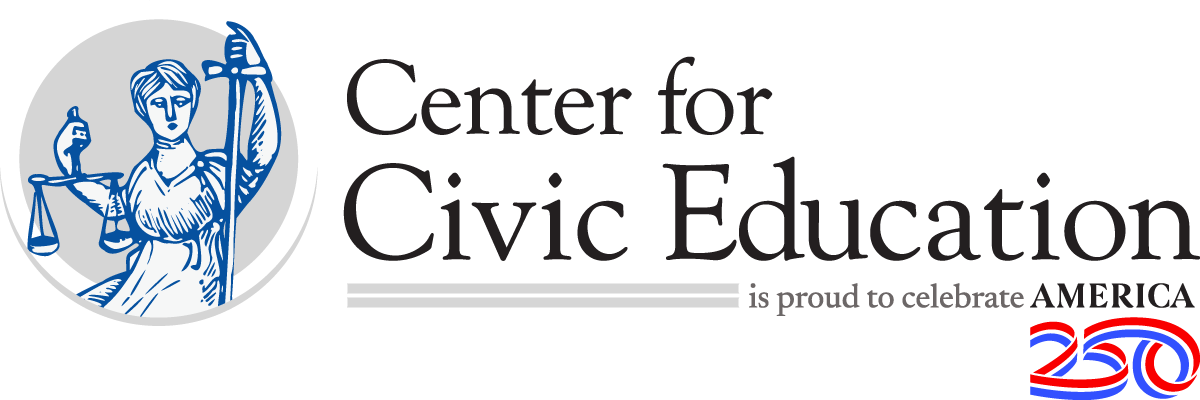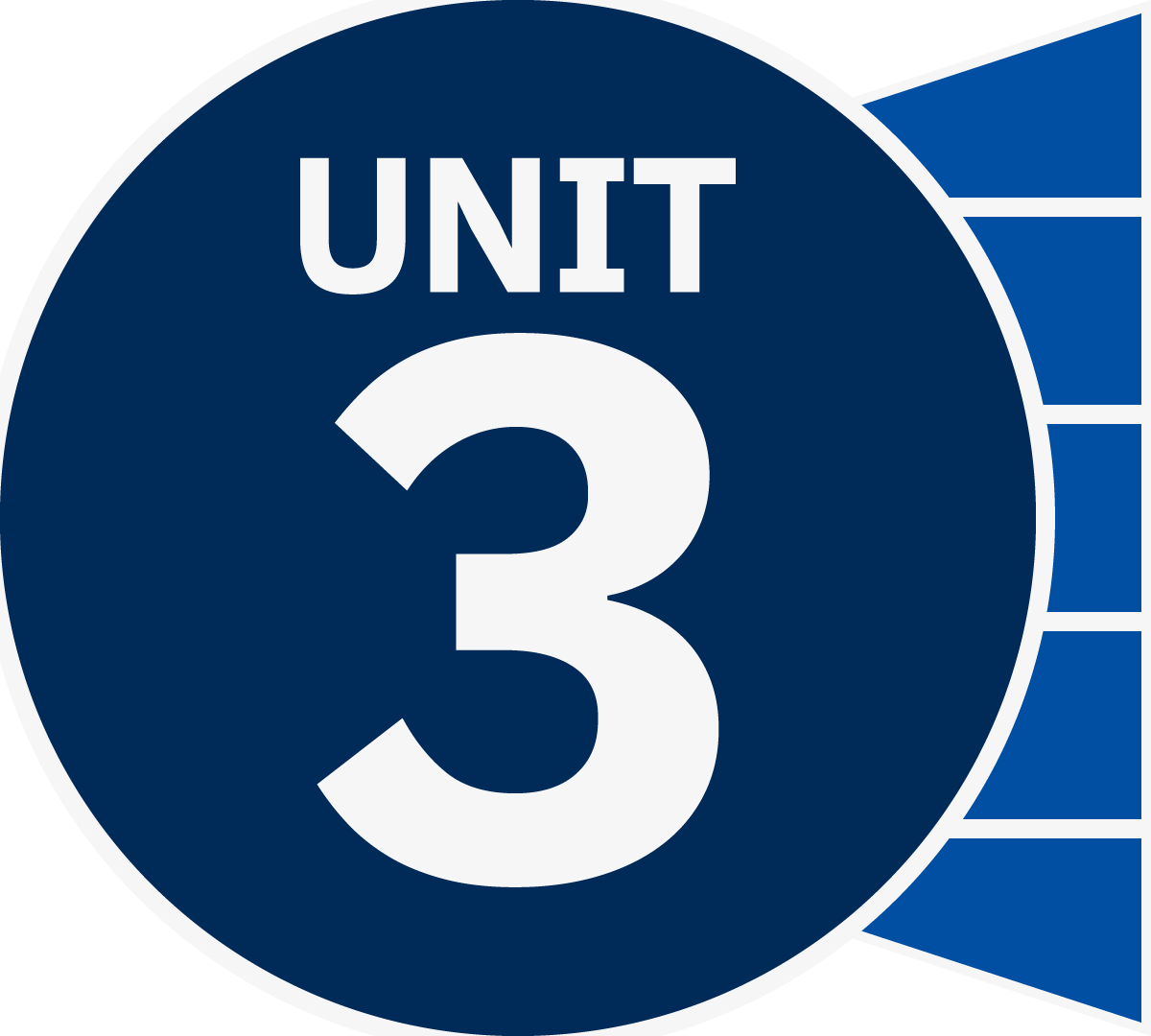Inquiry Companion: Unit 3
In Unit 3 of the We the People: The Citizen & the Constitution textbook, students discover the ways in which our Constitution is a living document that continues to evolve by examining the power of judicial review, the evolution of voting rights, and the impact of the Equal Protection Clause over the course of history.
How is the Inquiry Companion Structured?
Unit 3 challenges students to investigate the successes and failures of our democratic experiment. Our Inquiry Companion Guide activities for Unit 3 facilitate student participation in inquiry-based civics learning for each strategy.
Students engage by discussing a 1965 literacy test, and they explore the formation and function of political parties. They will explain the evolution of the Equal Protection Clause by participating in a civic conversation. Students then elaborate on voting rights and voter suppression through a democratic experience simulation. Finally, students will evaluate their understanding of the controversy surrounding judicial review.
Best practices for culturally responsive teaching weave through each activity.
Inquiry Guide Activity
Students apply their knowledge to real-world conversations to explain and solidify thinking and new understandings with academic language through structured academic controversy, Paideia Socratic Seminar, or other deliberation.
In this lesson, students will participate in a collaborative intellectual dialogue about the equal protection clause, facilitated with open-ended questions. The main purpose of this civic conversation is to arrive at a fuller understanding of the textual ideas and values of ourselves and each other.
Utilize this Explain strategy activity to enhance students’ understanding of the We the People: The Citizen & the Constitution textbook Level 3, Unit 3, Lesson 19 or Level 2, Unit 5, Lesson 26.
We the People: The Citizen & the Constitution (Level 3)
- Unit 3, Lesson 19: How Has the Equal Protection Clause of the 14th Amendment Changed the Constitution?
- Unit 5, Lesson 26: How Does the Constitution Safeguard the Right to Equal Protection of the Law?
- Attentiveness to political matters
- Listening
- Primary-source analysis
- Reading
- Self-awareness
- Self-management
- Speaking
- Discuss how the equal protection clause has been applied to six Supreme Court cases.
- Participate in a civic conversation to gain a fuller understanding of the equal protection clause's purpose and deliberate the continuing need for it.
- Self-reflection section of the Unit 3 Civic Conversation Organizer
- Does everyone have equal protection today?
- abridge Curtail.
- antimiscegenation statute Law that enforces racial segregation by criminalizing interracial marriage.
- deprive Deny a person the possession or use of something.
- due process Fair treatment entitled to a citizen through the normal judicial system.
- equal protection Requires that the government treat individuals fairly regardless of their race, national origin, citizenship status, sexual orientation, or gender.
- gender-biased Give favorable treatment to one gender over another.
- immunities Protection or exemption from something.
- infringed Limited.
- jurisdiction The official power to make legal decisions and judgments.
- naturalized Admitted to citizenship in a country.
- perpetuate Continue.
- racial segregation Separation of people into racial or other ethnic groups.
Note: This lesson contains material about racism that some students might find offensive or potentially traumatizing. This material has been included to provide students with a historical timeline of the equal rights clause. A culturally responsive classroom will provide a welcoming and safe environment where students feel comfortable to discuss difficult topics. Ensure students feel comfortable sharing appropriate personal perspectives. Consider establishing classroom norms that encourage discussion.
Ratified in 1868, the 14th Amendment to the U.S. Constitution granted citizenship to all persons born or naturalized in the United States, including formerly enslaved people. The 14th Amendment guarantees that all persons in the United States shall enjoy the “equal protection of the laws.” Authorizing the federal government to punish states that violated or abridged their citizens’ rights, many watershed Supreme Court rulings have been based upon the 14th Amendment.
Teachers may wish to take a deeper look at the following landmark equal protection clause cases in which the students will collaborate in groups to investigate:
Additional resources for teacher background include the following:
- Equal Protection of the Laws (Video)
- What are some current controversies over the equal protection clause? (Video)
- The Separate but Equal Doctrine, what were its effects, and what role did the NAACP play...? (Video)
- Brown v. Board of Education: The Struggle for Civil Rights, Part 2 (Video)
- Obergefell v. Hodges: LGBTQ+ Pride Week Series, Part 6 (Video)
- 14th Amendment
In this lesson, students will investigate primary sources and a Supreme Court case study that will be the focus of their civil dialogue experience. Teachers should preview all student materials and resources prior to the lesson.
Part 1
- Welcome students to social studies.
- Introduce the inquiry question: “Does everyone have equal protection today?”
- Allow students time to make a prediction about the inquiry question as well as offer their own supporting questions.
- Tell students that today’s activity will be to explore the equal protection clause of the 14th Amendment.
- Distribute the Equal Protection Clause of the 14th Amendment and conduct choral reading as a class. Take time to discuss the vocabulary words in bold to ensure student comprehension.
- As a class, work together to annotate the equal protection clause using the Annotation Station strategies:
- Highlight in YELLOW phrases that confuse you. Use context clues to figure out their meaning.
- Highlight in RED examples where rights have been violated, denied, or limited.
- Highlight in GREEN examples where rights have been protected or granted.
- ✩ Star the items that make you wonder and wish to explore further.
- Distribute the Equal Protection Timeline and guide students to fill in the first box, “1868,” to indicate the details for the ratification of the 14th Amendment, writing down a few facts about the Equal Protection Clause and then a fact about each following case.
- Using your routine strategy for setting up groups, divide the class into six collaborative groups of approximately three to four student members. Each group will be assigned one of the six case studies.
- Distribute the Equal Protection Clause Case Studies. Review assigned groups and discussion group directions so all students are aware of expectations.
- Working in collaborative groups, students will read and discuss the assigned equal protection case study and annotate the text using the Annotation Station strategies as follows:
- Highlight in YELLOW phrases that confuse you. Use context clues to figure out their meaning.
- Highlight in RED examples where rights have been violated, denied, or limited.
- Highlight in GREEN examples where rights have been protected or granted.
- ✩ Star the items that make you wonder and wish to explore further.
- Direct students to write down a fact about their assigned case study in the corresponding year on the timeline.
- Circulate around the room, encouraging each group, observing progress, and redirecting as needed.
Part 2
- Thank students for their work and acknowledge that they are scholars on the equal protection clause of the 14th Amendment as well as on their assigned case study.
- To conduct the civic conversation, consider arranging desks in a circle so that all students can see and hear each other.
- Inform students that, as a class, we will now participate in a civic conversation about the equal protection clause.
- Distribute copies of the Civic Conversation Organizer and ask students to set a goal for themselves that will help the flow and meaning of this activity using the “Before the Civic Conversation” section.
- Agree upon a class goal and indicate it on the Conversation Organizer as well.
- Remind students of the inquiry question: “Does everyone have equal protection?”
- To facilitate the civic conversation, encourage all students to take turns participating as you follow the Civic Conversation Question Set, which includes three questions for each case study and open-ended critical thinking questions for the whole group.
- Have students complete the timeline by writing down one fact about each of the cases discussed during our civic conversation.
- Be sure to allow time for students to provide their answer to today’s inquiry question: “Does everyone have equal protection?” either as part of the civic conversation or in written form at the bottom of the timeline.
- Congratulate students on their participation in today’s civic conversation.
Students will demonstrate mastery of the equal protection clause by participating in a civic conversation and completing a post-conversation self-reflection in the final section of the Civic Conversation Organizer.













